Abstract
Pigeons were trained on a probability learning task where the overall reinforcement probability was 0.50 for each response alternative but where the momentary reinforcement probability differed and depended upon the outcome of the preceding trial. In all cases, the maximum reinforcement occurred with a “win-stay, lose-shift” response pattern. When both position and color were relevant cues, the optimal response pattern was learned when the reinforcement probability for repeating the just-reinforced response was 0.80 but not when the probability was 0.65. When only color was relevant, learning occurred much more slowly, and only for subjects trained on large fixed ratio requirements.
Full text
PDF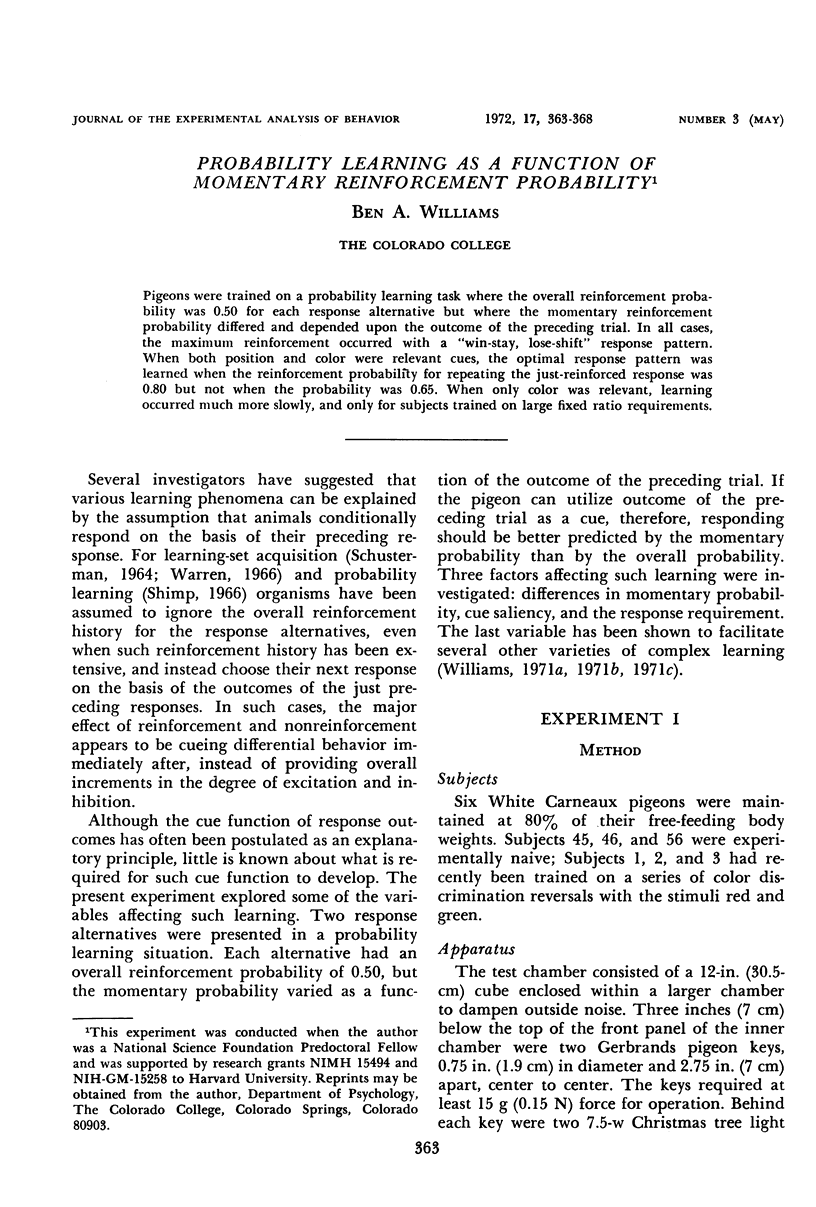
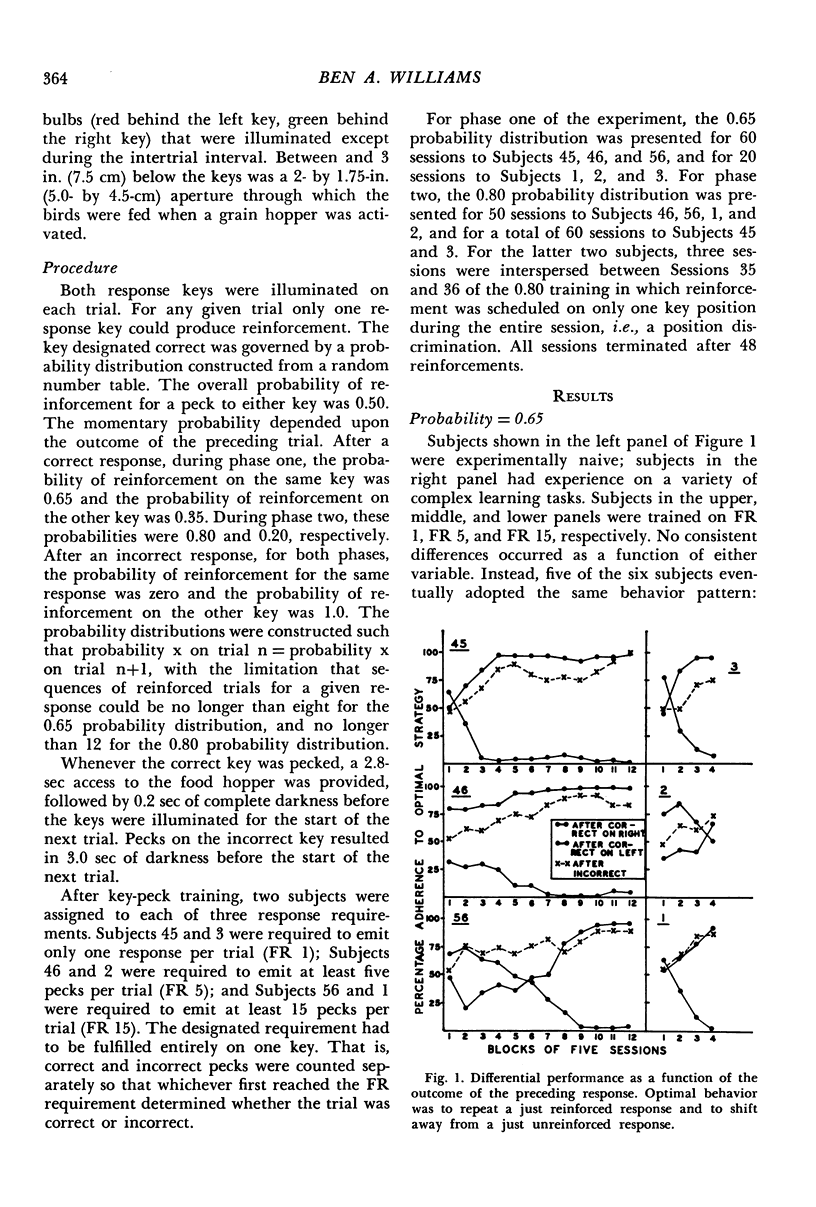
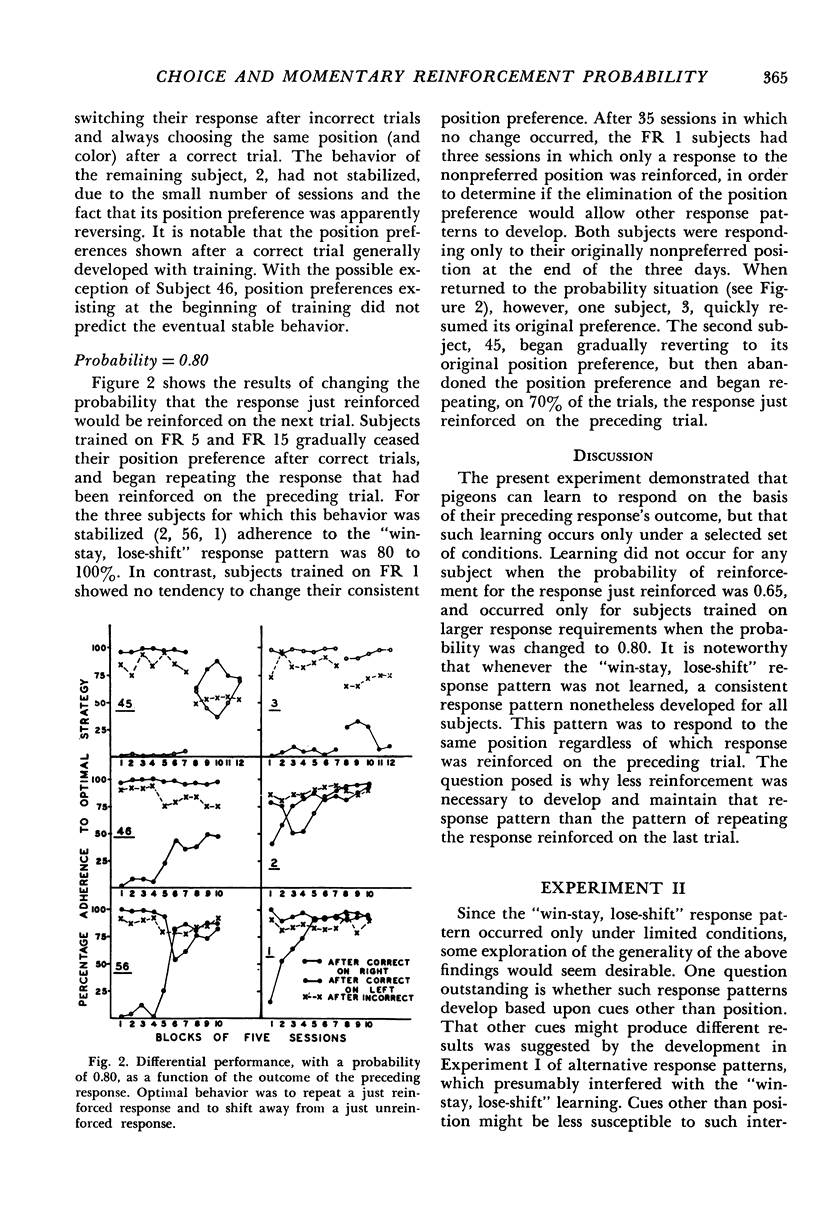
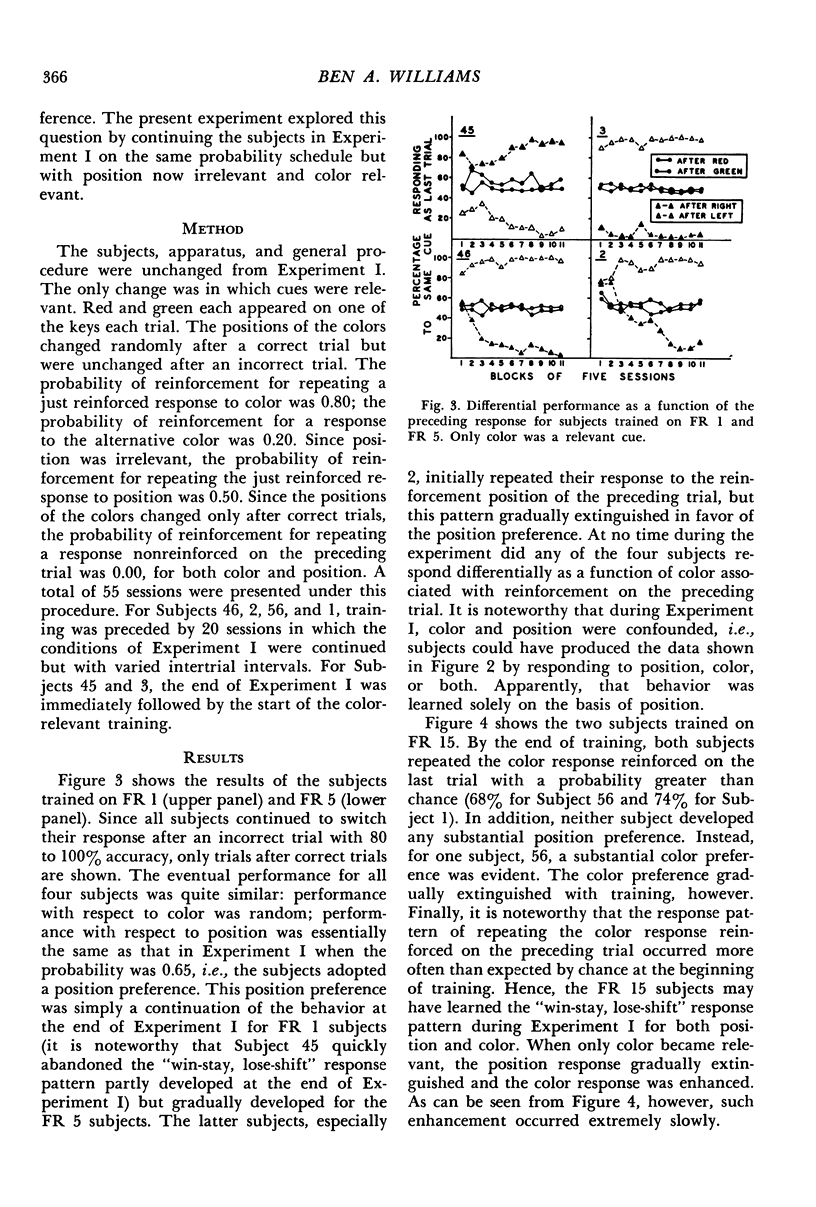
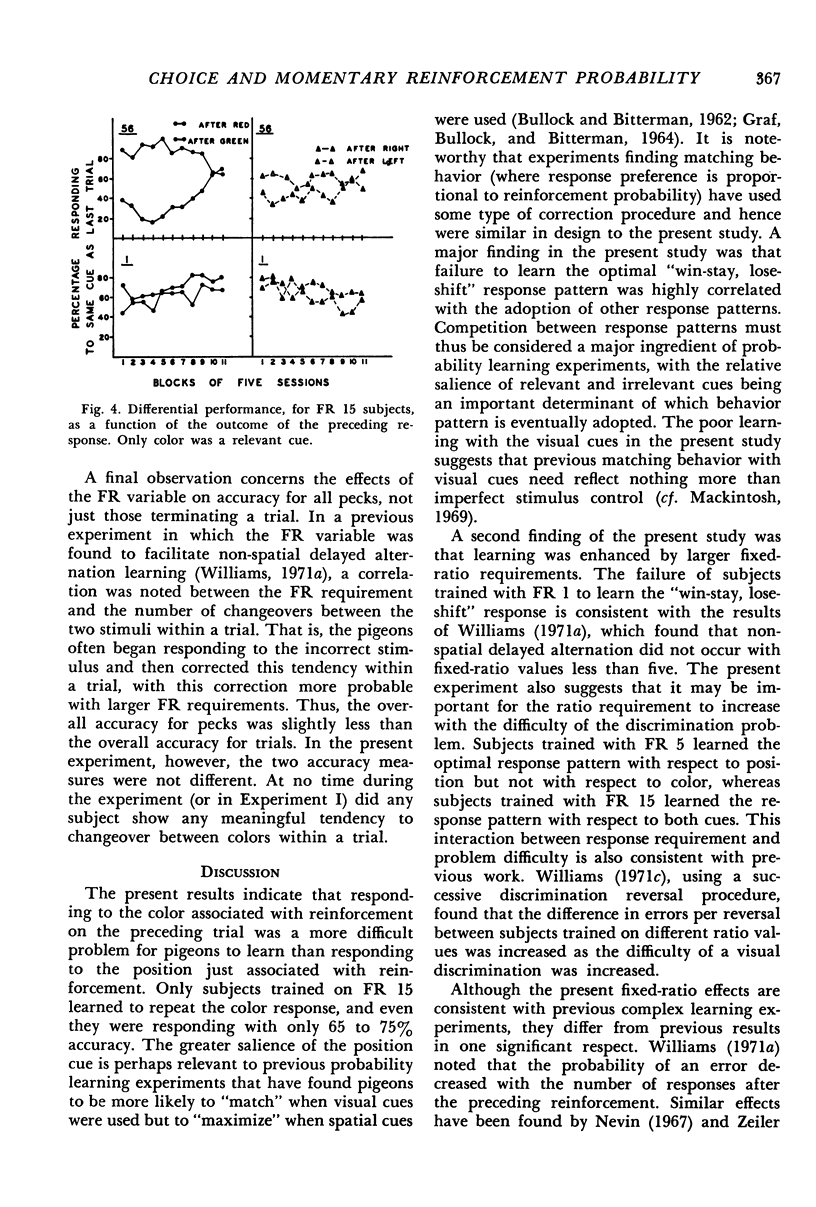
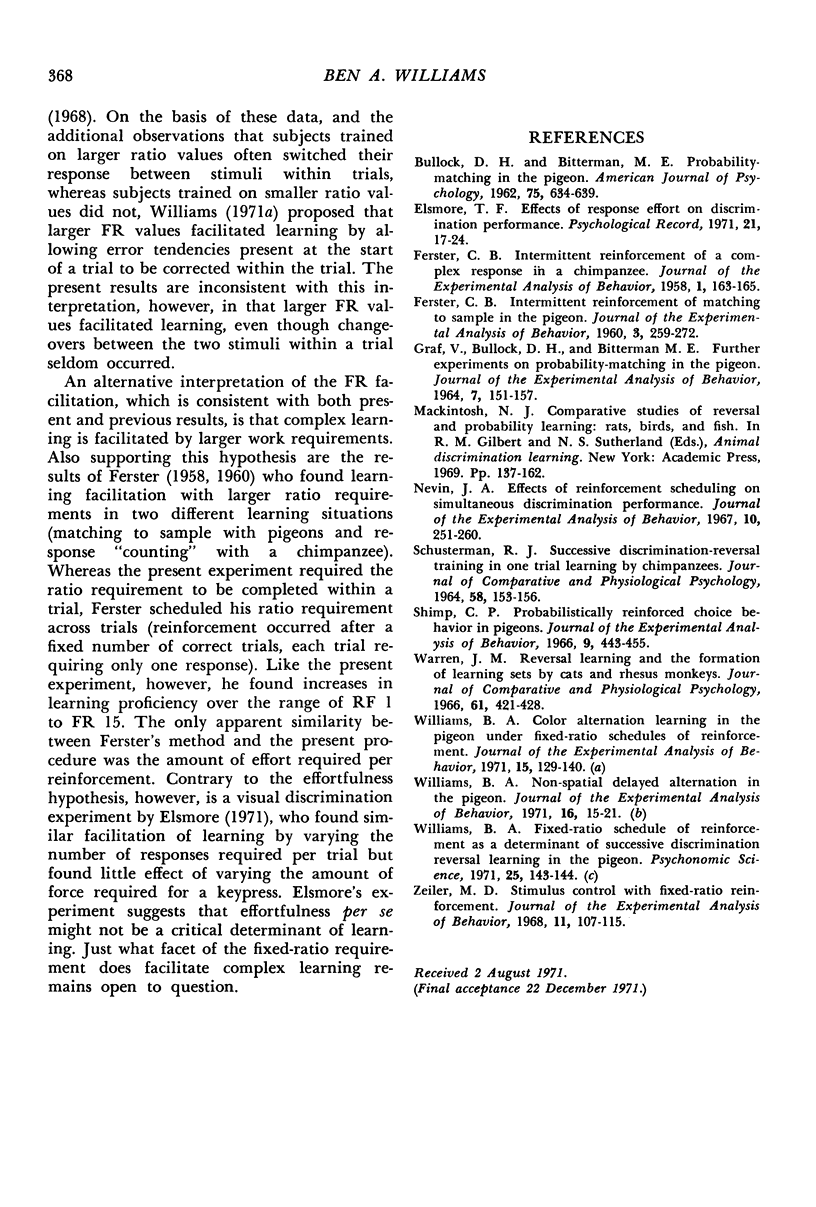
Selected References
These references are in PubMed. This may not be the complete list of references from this article.
- BULLOCK D. H., BITTERMAN M. E. Probability-matching in the pigeon. Am J Psychol. 1962 Dec;75:634–639. [PubMed] [Google Scholar]
- FERSTER C. B. Intermittent reinforcement of matching to sample in the pigeon. J Exp Anal Behav. 1960 Jul;3:259–272. doi: 10.1901/jeab.1960.3-259. [DOI] [PMC free article] [PubMed] [Google Scholar]
- Ferster C. B. Intermittent Reinforcement of a Complex Response in a Chimpanzee. J Exp Anal Behav. 1958 Apr;1(2):163–165. doi: 10.1901/jeab.1958.1-163. [DOI] [PMC free article] [PubMed] [Google Scholar]
- GRAF V., BULLOCK D. H., BITTERMAN M. E. FURTHER EXPERIMENTS ON PROBABILITY-MATCHING IN THE PIGEON. J Exp Anal Behav. 1964 Mar;7:151–157. doi: 10.1901/jeab.1964.7-151. [DOI] [PMC free article] [PubMed] [Google Scholar]
- Nevin J. A. Effects of reinforcement scheduling on simultaneous discrimination performance. J Exp Anal Behav. 1967 May;10(3):251–260. doi: 10.1901/jeab.1967.10-251. [DOI] [PMC free article] [PubMed] [Google Scholar]
- SCHUSTERMAN R. J. SUCCESSIVE DISCRIMINATION-REVERSAL TRAINING AND MULTIPLE DISCRIMINATION TRAINING IN ONE-TRIAL LEARNING BY CHIMPANZEES. J Comp Physiol Psychol. 1964 Aug;58:153–156. doi: 10.1037/h0044309. [DOI] [PubMed] [Google Scholar]
- Shimp C. P. Probabilistically reinforced choice behavior in pigeons. J Exp Anal Behav. 1966 Jul;9(4):443–455. doi: 10.1901/jeab.1966.9-443. [DOI] [PMC free article] [PubMed] [Google Scholar]
- Warren J. M. Reversal learning and the formation of learning sets by cats and rhesus monkeys. J Comp Physiol Psychol. 1966 Jun;61(3):421–428. doi: 10.1037/h0023269. [DOI] [PubMed] [Google Scholar]
- Zeiler M. D. Stimulus control with fixed-ratio reinforcement. J Exp Anal Behav. 1968 Mar;11(2):107–115. doi: 10.1901/jeab.1968.11-107. [DOI] [PMC free article] [PubMed] [Google Scholar]


